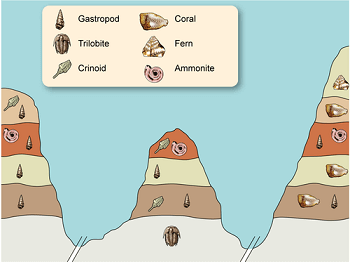Relative dating
The dating or relative geochronology is sort geological events , saying what happened before and what happened after, without assigning a specific date in millions of years.
The layers are horizontal layers that are deposited sediments in the bottom of a sedimentary basin. The strata contain information about the environment, age, and circumstances that characterized the environment in which they were deposited. It could be said that they are the pages of the book "History of the Earth" that we must "read" to know it. Although we do not have all these "pages", we can base ourselves on a series of geological principles that will allow us to date, in a relative way, the main geological events.


